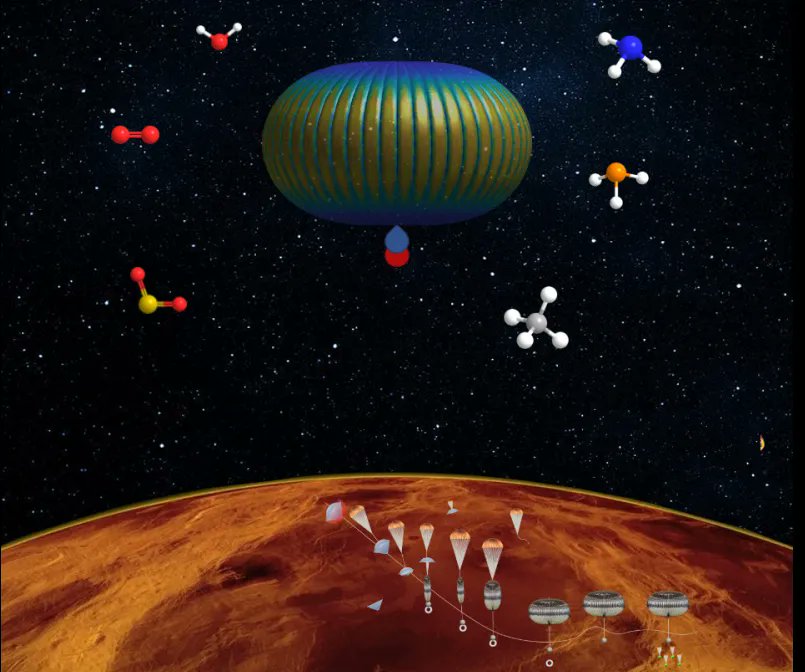Analysis by David Fickling | Bloomberg
September 5, 2022
Faced with the most serious energy crisis since the 1970s, the world is turning back to one of the biggest beneficiaries of the 1973 oil embargo: nuclear power.
That’s good news, but we should take care. This solution to 2022’s energy security problems risks creating its own energy security headache down the road.
.jpg)
That’s because uranium’s supply chain is as susceptible to geopolitical manipulation as those for natural gas, cobalt, and rare earths. If developed countries want to count on atomic energy as a reliable source of zero-carbon power in the 2030s and 2040s, they’re going to need to start locking down the mineral resources now.
Nearly three-quarters of nuclear generation happens in Europe, North America, and developed parts of Asia. Rich nations and their allies, however, provide just 19% of the 75,000 metric tons of uranium oxide needed to fuel those reactors each year. China, the former Soviet Union, Iran and Pakistan together accounted for 62% of mined production in 2021. India and traditionally non-aligned countries in Africa produce the remainder.
.jpg)
The situation results from the wrenching shifts the world’s uranium market suffered in recent decades. In the late 2000s, it was widely believed that solar and wind would remain too costly to compete with conventional generation well into the 2030s. That drove expectations of a boom in nuclear energy as the only viable large-scale source of zero-carbon power. This in turn sparked a rush of development in Kazakhstan, blessed with vast deposits of uranium close to the surface that can be cheaply extracted by pumping fluids underground in a process similar to fracking.
The 2011 Fukushima Daiichi nuclear disaster killed off those prospects, reducing nuclear generation by 11% over two years and bringing growth in atomic power to a halt for the first time since the 1960s. With new Kazakh supplies just coming onstream, the market entered a deep glut. Until uranium oxide prices started to creep back above $30 a pound last year, most miners outside Central Asia were operating at a loss.
Kazakhstan alone now provides more than 40% of the world’s uranium. The government in Nur-Sultan has an often testy relationship with its former colonist, especially since the invasion of Ukraine underlined Moscow’s desire to keep former Soviet states under its thumb. Still, it remains dependent on the goodwill of neighbors to export its nuclear materials, which are normally transported over land. If a Ukraine-style situation unfolded that saw developed democracies pitched against authoritarian rivals and control of energy supplies used as a weapon of war, even air freight might not be enough to keep western reactors fueled, since Kazakhstan is almost entirely surrounded by Russian, Chinese, Iranian and Pakistani airspace.
.jpg)
There are alternative sources out there. More than a quarter of the world’s uranium resources are in Australia, with another 9% in Canada. BHP Group’s Olympic Dam northwest of Adelaide remains one of the world’s largest deposits. Its vast uranium reserves could be produced at close to zero cost since the mine’s main products would be copper and precious metals — but for nearly two decades, executives have shied away from the immense capital spending needed to unlock this resource.
At the Nolans rare earths project near Alice Springs, a uranium resource measured at 13.3 million pounds in 2008 — enough to power a fleet of 20 reactors for 10 years — is now treated as waste material, a cost to be managed in running the mine rather than a revenue stream to be exploited.
“We’ve got a long way to go before uranium becomes something that people will talk about here in Australia,” said Gavin Lockyer, managing director of Arafura Resources Ltd. which is developing the site. Pre-Fukushima, flowsheets describing the processing of the Nolans ore listed uranium as a product, but it’s now so rarely thought about that he doesn’t know the price at which exploiting it would become viable. In theory, those early processing plans could be revived to tap one of the world’s larger uranium resources, he said, but “it’s not on the agenda” at the moment.
This over-dependence on one low-cost, unreliable supplier is not so different to the situations we’ve seen in other critical commodities in recent decades. Europe always had alternatives to buying piped gas from Russia. Electric battery-makers could have worked harder to reduce their dependence on cobalt, and source more of it from countries other than the Democratic Republic of Congo. Consumers of rare-earth metals might have looked at China’s growing dominance of that supply chain and sought to diversify at an earlier stage. In each case, though, developed democracies took the approach of seeking the lowest-cost resources, and hoped for the best.
That looks like happening again. Much of the post-Ukraine nuclear renaissance consists of plans to extend the life of existing reactors in Germany, Belgium, South Korea, and the US. Among developed countries, only France, the UK and Japan have committed to building significant numbers of new plants.
That scale of growth is unlikely to encourage investors that funding marginal uranium mines is a good use of their money — and unless that changes, the world’s dependence on the former Soviet Union will only grow more entrenched. European governments who’ve watched the cost of electricity increase 10-fold over the past year as Moscow turned off the gas taps are getting a taste of what the world looks like when you take your energy security for granted. There’s no time like the present to make sure we don’t make the same mistake again.
This column does not necessarily reflect the opinion of the editorial board or Bloomberg LP and its owners.
David Fickling is a Bloomberg Opinion columnist covering energy and commodities. Previously, he worked for Bloomberg News, the Wall Street Journal and the Financial Times.
Can The U.S. Kick Its Reliance On Russian Uranium?
- After banning coal, gas and oil imports from Russia, the U.S. now looks to ban Russian uranium imports.
- Banning Russian uranium is easier said than done thanks to Russia’s status as the world’s leading uranium enrichment complex.
- Thorium is now being billed as the 'great green hope' of clean energy production that produces less waste and more energy than uranium.
Back in early March shortly after Russia’s invasion of Ukraine, President Biden signed an executive order to ban the import of Russian oil, liquefied natural gas, and coal to the United States. Although the ban together with EU sanctions have been blamed for skyrocketing global energy prices, U.S. refiners are none the worse for wear since Russia supplied just 3% of U.S. crude oil imports. However, the punters were quick to point out that one notable export was left off of that list: uranium. The U.S. is far more reliant on Russian uranium, and imported about 14 percent of its uranium and 28 percent of all enrichment services from Russia in 2021 while the figures for the European Union were 20 percent and 26 percent for imports and enrichment services, respectively. Russia is home to one of the world’s largest uranium resources with an estimated 486,000 tons of uranium, the equivalent of 8 percent of global supply.
Recently, Ukrainian President Volodymyr Zelenskiy reiterated his calls on the U.S. and the international community to ban Russian uranium imports following the Russian shelling near Ukraine’s Zaporizhzhya power plant.
Many experts, however, contend that banning Russian uranium is easier said than done thanks to Russia’s status as the world’s leading uranium enrichment complex--accounting for almost half the global capacity--and that is something that cannot be easily replaced.
The U.S. currently has one operational plant managed by its UK-Netherlands-Germany owners that can produce less than a third of its annual domestic needs. Further, the country currently has no plans to develop or find sufficient enrichment capacity to become domestically self-sufficient in the future.
In contrast, China’s China Nuclear Corporation is working to double its capacity to meet the needs of China’s rapidly growing civilian nuclear reactor fleet, so that by 2030 China plans to have nearly one-third of global capacity.
Alternative Fuels
With the Biden administration having set a goal of reaching 100 percent carbon-free energy by 2035, nuclear power will likely continue to be a hot-button issue despite being a low-carbon fuel mainly because conventional nuclear fuel creates a lot of hazardous waste.
What would give nuclear energy a major boost would be a significant technological breakthrough in substituting thorium for uranium in reactors. The public would likely be far easier to bring on board with the removal of dangerous uranium.
Related: G7 Agrees On Oil Price Cap As Moscow Threatens To Halt Gas Supply To Europe
Thorium is now being billed as the 'great green hope' of clean energy production that produces less waste and more energy than uranium, is meltdown-proof, has no weapons-grade by-products and can even consume legacy plutonium stockpiles.
The United States Department of Energy (DOE), Nuclear Engineering & Science Center at Texas A&M and the Idaho National Laboratory (INL) have partnered with Chicago-based Clean Core Thorium Energy (CCTE) to develop a new thorium-based nuclear fuel they have dubbed ANEEL. ANEEL (Advanced Nuclear Energy for Enriched Life) is a proprietary combination of thorium and “High Assay Low Enriched Uranium” (HALEU) that intends to address high costs and toxic waste issues.
The main difference between this and the fuel that is currently used is the level of uranium enrichment. Instead of up to 5% uranium-235 enrichment, the new generation of reactors needs fuel with up to 20 percent enrichment. Last year, the U.S. Nuclear Regulatory Commission (NRC) approved Centrus Energy’s request to make HALEU at its enrichment facility in Piketon, Ohio, becoming the only plant in the country to do so. However, more could be on the way if the new fuel proves to be a success.
While ANEEL performs best in heavy water reactors, it can also be used in traditional boiling water and pressurized water reactors. More importantly, ANEEL reactors can be deployed much faster than uranium reactors.
A key benefit of ANEEL over uranium is that it can achieve a much higher fuel burn-up rate of in the order of 55,000 MWd/T (megawatt-day per ton of fuel) compared to 7,000 MWd/T for natural uranium fuel used in pressurized water reactors. This allows the fuel to remain in the reactors for much longer meaning much longer intervals between shut downs for refueling. For instance, India’s Kaiga Unit-1 and Canada’s Darlington PHWR Unit hold the world records for uninterrupted operations at 962 days and 963 days, respectively.
The thorium-based fuel also comes with other key benefits. One of the biggest is that a much higher fuel burn-up reduces plutonium waste by more than 80%. Plutonium has a shorter half-life of about 24,000 years compared to Uranium-235’s half-life of just over 700 million years. Plutonium is highly toxic even in small doses, leading to radiation illness, cancer and often to death. Further, thorium has a lower operating temperature and a higher melting point than natural uranium, making it inherently safer and more resistant to core meltdowns.
Thorium’s renewable energy properties are also quite impressive.
There is more than twice thorium in the earth’s crust than uranium; In India, thorium is 4x more abundant than uranium. It can also be extracted from sea water just like uranium making it almost inexhaustible.
The thorium curse?
Hopefully, ANEEL could soon become the fuel of choice for countries that operate CANDU (Canada Deuterium Uranium) and PHWR (Pressurized Heavy Water Reactor) reactors such as China, India, Argentina, Pakistan, South Korea, and Romania. These reactors are cooled and moderated using pressurized heavy water. Another 50 countries (mostly developing countries) have either started nuclear programs or have expressed an interest in launching the same in the near future. Overall, only about 50 of the world’s existing 440 nuclear reactors can be powered using this novel fuel.
Nuclear energy is enjoying another mini-renaissance of sorts.
The ongoing energy crisis has been helping to highlight nuclear energy’s billing as the most reliable energy source, which ostensibly gives it a serious edge over other renewable energy sources such as wind and solar which exist at the lower end of the reliability spectrum.
Related: Oil Markets Jittery As Chinese Tech Hub Returns To Lockdown
Meanwhile, Unite, Britain and Ireland’s largest union, has backed the UK’s Nuclear Industry Association (NIA) call for massive nuclear investments by saying that comprehensive investment in the nuclear industry will be necessary to kick-start the UK’s post-pandemic economy, while also fulfilling the EU’s goal to decarbonize all its industries by 2050.
EU leaders have recognized nuclear energy as a way to fight climate change but have mainly touted a hydrogen economy in their latest topline targets.
Given heavy public backlash, however, it remains highly doubtful whether nuclear energy can really make a significant comeback here in the U.S. Still, the U.S. will probably have a ready market for its new thorium fuel since it has signed bilateral nuclear treaties--including the 1-2-3 Agreement--related to security, weapons non-proliferation and nuclear materials with no less than 48 countries.
It could if the new thorium fuel becomes a reality, which is far from a given. It’s not proven on a commercial scale. Thorium MSRs (Molten Salt Reactors) have been in development since the 1960s by the U.S. China, Russia, and France yet nothing much ever came of them.
Nuclear radiologist Peter Karamoskos, of the International Campaign to Abolish Nuclear Weapons (ICAN) has advised the world not to hold its breath:
“Without exception, [thorium reactors] have never been commercially viable, nor do any of the intended new designs even remotely seem to be viable. Like all nuclear power production they rely on extensive taxpayer subsidies; the only difference is that with thorium and other breeder reactors these are of an order of magnitude greater, which is why no government has ever continued their funding.”
ANEEL offers another possible way back to nuclear, but only if it succeeds where thorium has not–so far.
By Alex Kimani for Oilprice.com
Contributed Commentaries
The Perfect Storm for Uranium
Marin Katusa Friday September 02, 2022 12:05

Nuclear power and renewables are essential to proceed with a green transformation. Russia’s invasion changed the global energy situation.”
– Prime Minister Fumio Kishida, August 24, 2022
I don’t know anyone else other than myself in the financial world that has written two bestselling books and both books include a chapter about uranium.
As one of the few professional investors and the largest independent financier who has invested in uranium for over 20 years…
I can say uranium is creeping closer to its final inflection point.In July 2022, the EU stated that nuclear power would qualify as a green investment beginning in 2023.
That’s a monumental statement.
It paves the way for a plethora of tax and policy incentives to build out nuclear power plants.
Keeping the momentum going…
In a major policy shift, Japan just announced it’s going to restart several nuclear reactors over the next 12 months.The market for uranium stocks went bananas on the news. Most companies were up double-digit percentage points.
Understandably, the scars from Fukushima run deep in Japan.
It was a horrific event and a major black eye for the uranium sector.
The Big Deal: Japan’s Nuclear About-Face
Japan is the world’s third-largest economy and fifth-largest greenhouse gas emitter.
It has been stretching its power grid to the max since the Fukushima meltdown in 2011.Prior to Fukushima, 30% of Japanese electricity was produced by nuclear power.
After Fukushima, Japan immediately shut down all 54 of its reactors.
Today, nuclear power produces roughly 7% of Japan’s electricity.
However, an earthquake recently knocked out power and stretched the remaining power lines beyond the max.
This is the second major power crunch felt by Japan, which could have been avoided if the country was running a full power grid.
Their politicians are left with few other options than to return to nuclear as a key source of baseload power.
Japan Pledged to Become Carbon Neutral by 2050
To meet its global climate commitments, the country will need to restart almost EVERY nuclear reactor it shuttered in the aftermath of the 2011 meltdowns.
And then build more.It’s forecast that to meet the Paris goals, Japanese nuclear power needs to make up 20% to 22% of its energy mix by 2030.
That’s a 3-fold increase from levels today!
With carbon prices in the EU making record highs recently, Japan’s pivot will be critical in the country’s energy policy.
Energy Transition or Energy Nightmare?
Worldwide, the energy transition and natural disasters are throwing new challenges at utilities, stretching grids and triggering blackouts.
This threatens economies that are reliant on single fuel sources for large portions of their electricity generation.
Europe is caught in a firestorm of challenges as the continent once led the way in decarbonization efforts focusing on renewable power.
However, retiring its nuclear and coal plants left it highly susceptible to Russian natural gas, which in the wake of the war in Ukraine has now created a continent-wide crisis.
On the other side of the world, China is feeling the heat, literally.
The historic drought in China is one many citizens have never seen before.
Extreme heat has taken its toll on China’s hydro generation, which accounts for 18% of the country’s electricity generation.
Low flow rates reduce hydropower production.
Contrary to its sustainability goals, this led to a slew of new coal plants being permitted.
Steady Eddy Power
I’ve long stated that uranium has the potential to play a key role in baseload power generation.
As the only zero-emission baseload fuel option, it makes all the sense in the world for nuclear to be an important segment of global electricity provision.

Now many uranium haters will highlight the radioactive toxic waste as an issue, which is true.
However, those are the old reactors, which also are the ones that caused meltdowns in Chernobyl and Fukushima.
The new generation reactors as developed by companies like Bill Gates’ TerraPower, X-Energy Ltd, and others are meltdown proof and do not produce radioactive waste.
Furthermore, they’re smaller, making them modular and hence faster to construct, with the ability to load-balance.
The catch?
It still takes a long time to jump through the bureaucratic hoops and to get projects financed.Uranium has had incredible booms and busts, perhaps more so than any other commodity…
Below is the historical price of uranium going back to 1930. As you can see, when it moves, it moves big and fast.

The latest collapse from 2009 through 2020 was sparked by the massive decline in uranium consumption out of Japan after the Fukushima meltdown.
In 2011, before the Fukushima disaster, there were 442 reactors in operation.
Today, there are 438 in operation with another 56 under construction.
Japan currently has 33 reactors in operation. And according to Japanese officials…The initial restart could bring another 7 back online within the next 12 months.
Uranium Price Moves
Recently, uranium prices have begun to tick back up as spot market inventory began to dry up thanks to buyers like Uranium Trust and Uranium Royalty Corp.
This has sent prices up 40% over the past 12 months and nearly 100% since the pandemic.

With minimal inventory available for immediate delivery, this opens up the potential for a big squeeze in uranium IF the utilities need to source a lot of material quickly.
Recall Russia and its Russian allies produce half the uranium consumed worldwide.
Uranium Forecast
Below is a chart that shows the current supply and demand scenario.
If this chart is any indication, we could be heading for another spike in uranium prices.

The phasing out of fossil fuels in favor of clean baseload power like uranium, coupled with intermittent renewable energy sources, provides a zero-emission, reliable, and scalable fuel stack.
Japan is not alone in its quest for curbing greenhouse gas emissions.
This is a worldwide goal and I believe decarbonization represents the single greatest risk-adjusted investment opportunity of my lifetime.



.jpg;w=960;h=640;bgcolor=000000)






